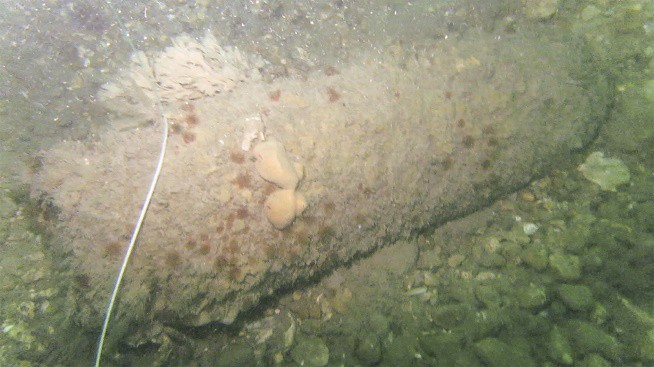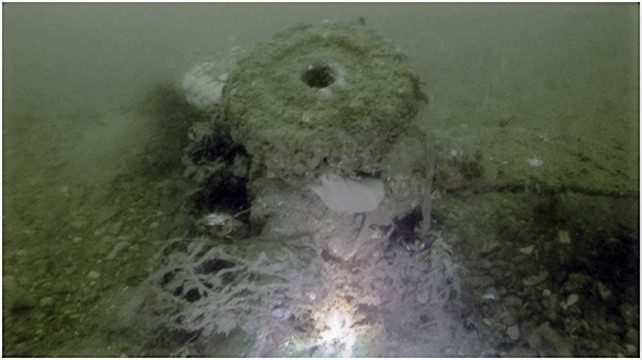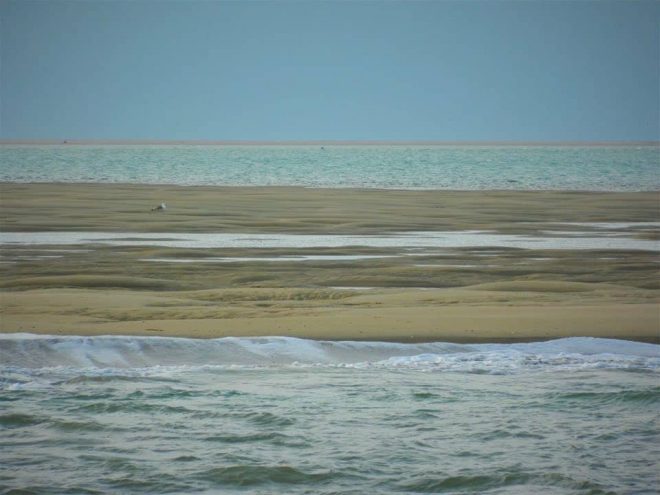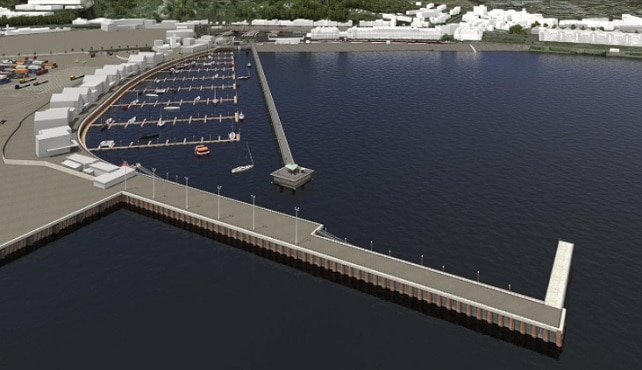
The Ministry of Defence will have a dive team on standby to investigate any potential military aircraft crash sites discovered during the proposed dredging of the Goodwin Sands by Dover Harbour Board.
An American joint venture dive is also being planned to try and locate the wrecks of crashed US wartime bombers.
In August 2018, Ramsgate based diver Vince Woolsgrove discovered and photographed the engine, propeller blades and a bomb from an apparent World War Two bomber. It lies on an area of the seabed which had been surveyed twice and was analysed by DHB’s archaeological contractors, Wessex Archaeology, as a ‘sea floor disturbance’.

The discovery of the crashed plane was dismissed by the licensing authority, the Marine Management Organisation, on account of it only being in the buffer zone of the proposed dredge area. The MoD said there was a lack of evidence concerning the presence of crashed airplanes in the target area.
Campaign group Goodwin Sands SOS contacted the MOD six months ago to request identification of the crashed airplane. An initial response received earlier this month confirmed the MOD held no records of the plane.
SOS co-ordinator Fiona Punter described the MOD’s attitude ‘as extremely frustrating’. She added: “They refused to object to the dredging application on account of lack of solid evidence, yet they now plan on putting a dive team on standby to investigate any discoveries. This approach is purely reactive and a shameful way to deal with potential war graves and the remains of many brave men who lost their lives in service to their country.”
Military aircraft crash sites are automatically protected under the Protection of Military Remains Act 1986, which makes it illegal for anyone to disturb them without first obtaining a licence from the MOD.
The Kent Battle of Britain Museum has estimated that at least 60 airplanes and 80 aircrew from Britain, Poland and Germany crashed on the Goodwin Sands during 1940 alone. Only one, a Dornier 17, has ever been recovered.

Twenty-nine anomalies (potential heritage assets) from either shipwrecks or military aircraft crash sites remain in the proposed dredge zone and despite calls for ‘ground truthing’, no one has established what they are.
Dover Harbour Board’s consultants, Royal Haskoning DHV, have imposed 25m radius exclusion zones around them but some expert maritime archaeologists consider this to be too small. The average intact wingspan of a World War Two bomber was 30m and debris from a crash site is often spread out over several hundred meters.
Project Recover
Several American bombers are known to have crashed in the area in the later stages of the war. Under Project Recover, the Americans pledge to repatriate any deceased serviceman, however distant the date of their death in action.
The U.S. Department for POW / MIA Accounting Agency (DPAA) is planning a joint dive venture on the Goodwins with 3H Consulting Ltd, who have been advising the SOS campaign on technical matters, in the next few months.
A team from 3H recently attended a training course in Hawaii, funded by the US Government, for the specific purpose of locating the sites of US planes that crashed in UK waters during World War Two including the Goodwin Sands.
The intention of the dive venture is to identify the plane found by Vince Woolsgrove and to locate some of the other American B17 and B26 bombers known to be lost in the Goodwins area.
Goodwin Sands SOS has launched a Judicial Review into the Marine Management Organisation’s decision to grant Dover Harbour Board a licence to dredge 3 million tonnes of aggregate from the Goodwin Sands.
The licence decision, which was made in July 2018, followed two years of campaigning by the community group and came just one week after the end of the public consultation for the Goodwin Sands Marine Conservation Zone designation.
The date for the Judicial Review (JR) has now been set for Wednesday June 5 at the High Court in London.
Dover Harbour Board docks plan

In May 2016 Dover Harbour Board applied to the MMO for a licence to dredge 2.5 million m3 of sand from the Goodwin Sands to use for landfill and construction of their new Dover Western Docks.
In January 2017 DHB appointed Volker Stein Boskalis Westminster (VSBW) as their main contractors for phases 1 and 2. In April 2017, Westminster Gravels Ltd, part of the Boskalis Westminster group, was granted a licence to dredge a new area in the Outer Thames Estuary called Area 501.
In August 2017, DHB announced they would be extracting 500,000 m3 of aggregate from this new area 501 as they need it for immediate works, reducing the amount of sand they wish to take from the Goodwins.
DHB say the Goodwins dredge would keep costs low on the £250m project to rejuvenate Europe’s busiest port.
On its website DHB states: “Marine aggregates form the building blocks of modern day life. They’re used to build homes, offices, shops and roads. There are billions of tonnes of marine aggregate just a few miles up the coast from Dover – the Goodwin Sands. The Goodwin Sands have been dredged extensively for commercial use since the Second World War; for example, twice the volume we require for the development was used in the construction of the Channel Tunnel.”

